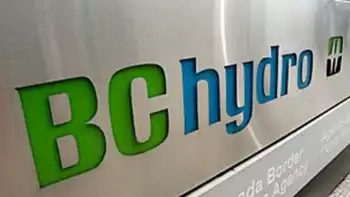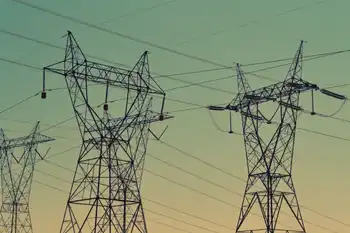Utilizing cow manure for natural gas
SAN JOAQUIN VALLEY, CALIFORNIA - Six large dairies in the central San Joaquin Valley could start turning their cow manure into natural gas to heat up to 50,000 homes a year under a breakthrough agreement expected to be announced today by a New Hampshire-based renewable energy company.
Pacific Gas & Electric Co. has signed an agreement to distribute the natural gas produced by methane digesters, which would be built at each of the dairies by Microgy Inc., a subsidiary of Environmental Power Corp., based in Portsmouth, N.H.
"This would be a major benefit, considering that methane is a potent greenhouse gas," said Dan Kammen, a professor with the Energy and Resources Group at the University of California at Berkeley.
"This could be an economically attractive process for the dairies. Instead of being a source of emissions, they become a source of green power. This is quite a big deal."
It's expected that the dairies could be putting gas into PG&E pipelines by the end of 2007 or early 2008 "if we can get the regulators off the dime," said Jeff Dasovich, senior vice president of development for Environmental Power's western region.
The dairies include Maddox Dairy in the Burrel area, Joseph Gallo Farms in Atwater and Bar 20 Partners between Kerman and Mendota. Another three dairies — Cloverdale, Hollandia Farms and Lancing — are in the Hanford area.
Dasovich explained that Microgy is paying to build the digesters from the ground up, along with "scrubber" facilities to remove carbon dioxide and water vapor from the gas.
John Shehadey, a managing partner in Bar 20, said he will need to modify his dairy, which will have 9,000 cows about a year from now, to suit the digester installation.
But he said he will recoup his investment. "It pencils out," he said. "It will pay the costs of making the changes.
"One of the biggest things for us is that it will be a big help for us environmentally," he said.
"Manure is a big concern for air and water quality. But if you do something to improve the environment, it has to be cost effective. This will be."
Dasovich said a benefit for the farmers is that the system will provide them with another source of revenue.
While Microgy will pocket much of the money from sales of the natural gas, the farmers also will get a cut. The percentage was not disclosed.
Dasovich said each methane production system will cost millions of dollars.
Once completed, the facilities will generate about 3 billion cubic feet of commercial-quality natural gas a year.
In July, Environmental Power signed a pipeline interconnection agreement that allows it to transport natural gas through PG&E's pipelines. In October, the utility committed to buying 8 million cubic feet of natural gas daily from future Environmental Power facilities.
In addition to providing gas to PG&E, the six dairies would annually capture nearly 800,000 tons of greenhouse gas emissions, Dasovich said. He said those credits have an estimated value of more than $3 million based on prices on the Chicago Climate Exchange.
Joseph Gallo Farms has been a pioneer in putting methane digesters at its dairy. The planned system would be the third at the dairy.
In July 2005, Microgy and Joseph Gallo Farms announced their first digester partnership to offset propane use in their cheese production facility.
In 2004, the company headed by Mike Gallo completed its first digester, used to generate a portion of the electricity needed to process cheese produced by the megadairy.
Michael Marsh, who heads Western United Dairymen in Modesto, said most of the 11 dairies in California that have digesters use them to create electrical power. Because they have been unable to sell excess power or gas to the utility, the dairy operators have "flared off" excess methane, or simply burned it.
"Before this, there has been no market for gas or electricity," Marsh said. "We're very pleased that, at last, some type of power purchase agreement has been developed by the investor-owned utility. Finally, there is a market for some of the energy that can be developed on the farm."
Marsh said PG&E has shown more interest in the renewable fuel because of the recent passage of state legislation calling for cutting down on greenhouse gases and because of initiatives from Gov. Schwarzenegger on bioenergy.
He said he believes there still remain some issues PG&E needs to address to make the building of digesters more economically viable on dairies.
Related News

Ontario Energy Board Sets New Electricity Rate Plan Prices and Support Program Thresholds
TORONTO - Residential, small business and farm customers can choose their price plan, either Time-Of-Use (TOU), Tiered or Ultra-Low-Overnight (ULO) prices. The OEB has an online bill calculator to help customers who are considering a switch in price plans.
The Government of Ontario announced on Friday, October 19, 2023, that it is raising the income eligibility thresholds that enable Ontarians to qualify for the Ontario Electricity Support Program (OESP) by up to 35 percent. OESP is part of Ontario’s energy affordability framework meant to reduce the cost of electricity for low-income households by applying a monthly credit directly on to electricity…




